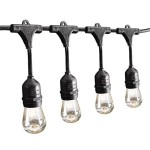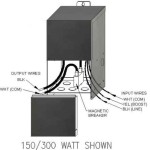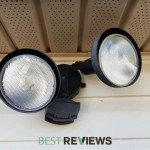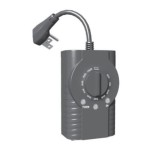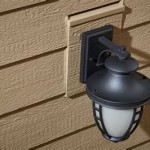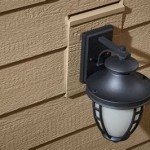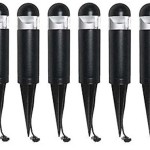Outdoor Lighting Strategies for Restaurants: Enhancing Ambiance and Functionality
Outdoor lighting plays a critical role in the success of a restaurant. It extends beyond simple illumination; it's a strategic element that contributes to ambiance, safety, and ultimately, the overall dining experience. Effective outdoor lighting can attract customers, create a welcoming atmosphere, and enhance the aesthetic appeal of the restaurant's exterior and outdoor seating areas. This article explores key considerations and strategies for implementing successful outdoor lighting plans for restaurants.
Well-designed outdoor lighting solutions must consider not only the aesthetic aspects but also the practical needs of customers and staff. Considerations such as visibility, safety, and energy efficiency are crucial for creating a functional and inviting outdoor space. Improperly planned or installed lighting can have negative impacts, ranging from diminished visual appeal to increased energy consumption and potential safety hazards.
Balancing Ambiance with Functionality
The most effective outdoor restaurant lighting solutions strike a balance between creating a visually appealing ambiance and providing practical illumination for various activities. The goal is to create an atmosphere that is inviting and comfortable while ensuring that patrons can easily navigate the space, read menus, and enjoy their meals. This requires employing different types of lighting fixtures and techniques to achieve the desired effects.
One critical aspect of balancing ambiance and functionality is the strategic use of layering. Layered lighting involves combining different types of light sources to create depth, visual interest, and optimal illumination. This typically involves three primary layers: ambient lighting, task lighting, and accent lighting. Ambient lighting provides overall illumination for the space, setting the general mood and creating a sense of welcome. Task lighting focuses on illuminating specific areas, such as tables or walkways, to facilitate specific activities. Accent lighting highlights architectural features, landscaping, or decorative elements, adding visual interest and enhancing the restaurant's overall aesthetic.
Ambient lighting can be achieved through a variety of fixtures, including string lights, lanterns, and strategically placed spotlights aimed at architectural elements. The key is to choose fixtures that emit a warm, inviting glow without being overly bright or harsh. Dimmers can be incorporated to adjust the ambient lighting level to suit different times of day or specific events.
Task lighting is essential for ensuring that customers can comfortably read menus and see their food. Table lamps, pendant lights, or directional spotlights can be used to provide focused illumination over each table. It's important to select fixtures that emit a sufficient amount of light without creating glare or hotspots. The use of adjustable fixtures can also be beneficial, allowing diners to customize the lighting level to their preference.
Accent lighting is used to highlight specific features and add visual interest to the outdoor space. This can include spotlights illuminating landscaping, up lights accentuating architectural details, or pathway lights guiding guests through the area. The use of color can also be incorporated into accent lighting to create a specific mood or highlight the restaurant's branding. Careful consideration should be given to the placement and intensity of accent lighting to ensure that it enhances the overall ambiance without being distracting.
Color temperature plays a crucial role in establishing the desired ambiance. Warmer color temperatures (2700K-3000K) create a cozy and inviting atmosphere, while cooler color temperatures (4000K-5000K) can create a more modern and energetic feel. For most outdoor restaurant settings, warmer color temperatures are generally preferred, as they promote relaxation and create a more intimate dining experience.
The selection of lighting fixtures should also take into account the overall style and theme of the restaurant. Fixtures should complement the architectural design and décor, contributing to a cohesive and visually appealing aesthetic. For example, a rustic restaurant might benefit from using lanterns or string lights with a vintage feel, while a modern restaurant might opt for sleek, minimalist fixtures.
Enhancing Safety and Security with Strategic Lighting
Beyond ambiance, safety and security are paramount considerations in outdoor restaurant lighting design. Properly placed and adequately bright lighting can deter crime, prevent accidents, and create a sense of security for both customers and staff. This requires a comprehensive approach that addresses potential hazards and vulnerabilities.
Adequate lighting along pathways, walkways, and entrance areas is essential for preventing trips and falls. Pathway lights should be strategically placed to provide clear visibility without creating glare. Consider using low-level lighting fixtures that cast a wide beam of light across the walking surface. Steps and ramps should be particularly well-lit to highlight changes in elevation.
Parking areas and surrounding grounds should also be well-lit to deter crime and enhance security. Security lighting should be bright and evenly distributed, eliminating dark spots and shadows where potential threats could lurk. Motion-sensor lights can be used to automatically illuminate areas when movement is detected, providing an extra layer of security.
Emergency exits and fire escape routes must be clearly illuminated to ensure safe evacuation in the event of an emergency. Exit signs should be prominently displayed and well-lit, and escape routes should be free of obstructions and adequately illuminated. Regular maintenance is crucial to ensure that emergency lighting systems are functioning properly.
Consider the placement of lighting fixtures to minimize glare and light trespass. Glare can be distracting and uncomfortable for customers, while light trespass can disrupt neighboring properties. Shielded fixtures that direct light downward can help to minimize both glare and light trespass. It is also important to consider the impact of lighting on wildlife and the environment, and to choose fixtures that minimize light pollution.
Integrating lighting with security systems can further enhance safety and security. Security cameras can be strategically placed and integrated with lighting systems to provide enhanced surveillance capabilities. Lighting can also be used to deter crime by creating a visible presence and making it more difficult for criminals to operate unnoticed.
Prioritizing Energy Efficiency and Sustainability
In today's environmentally conscious world, energy efficiency and sustainability are becoming increasingly important considerations in outdoor restaurant lighting design. Choosing energy-efficient lighting technologies and implementing sustainable practices can significantly reduce energy consumption, lower operating costs, and minimize the environmental impact of the restaurant.
LED lighting is the most energy-efficient lighting technology currently available. LED fixtures consume significantly less energy than traditional incandescent, halogen, or fluorescent fixtures, and they have a much longer lifespan. LEDs also produce less heat, which can further reduce energy consumption by lowering cooling costs. While the initial cost of LED fixtures may be higher, the long-term savings in energy and maintenance costs make them a cost-effective choice.
Consider using smart lighting controls to further optimize energy efficiency. Smart lighting controls can automatically adjust lighting levels based on occupancy, daylight levels, and time of day. These controls can significantly reduce energy consumption by turning lights off when they are not needed or dimming them when daylight is sufficient.
Photocells can be used to automatically turn lights on at dusk and off at dawn, ensuring that lights are only used when they are needed. Motion sensors can be used to activate lights only when movement is detected, further reducing energy consumption. Dimmers can be used to adjust lighting levels to suit different activities or times of day, allowing for further energy savings.
Explore renewable energy sources, such as solar power, to power outdoor lighting systems. Solar-powered lighting systems can significantly reduce reliance on grid electricity and lower energy costs. Solar-powered lights are also environmentally friendly, as they do not produce greenhouse gas emissions.
Consider using recycled or sustainable materials in the construction of lighting fixtures and installations. Choosing fixtures made from recycled aluminum, wood, or other sustainable materials can reduce the environmental impact of the lighting system. Be mindful of the end-of-life disposal of lighting fixtures and choose fixtures that can be easily recycled or refurbished.
Regular maintenance is crucial for ensuring that outdoor lighting systems are operating efficiently. Dirty or damaged fixtures can reduce light output and increase energy consumption. Regularly cleaning fixtures and replacing burned-out bulbs can help to maintain optimal performance and extend the lifespan of the lighting system.
By prioritizing energy efficiency and sustainability in outdoor restaurant lighting design, restaurants can reduce their environmental impact, lower operating costs, and enhance their brand image.

21 Outdoor Lighting Ideas For Restaurants Solutions

Outdoor Restaurant Lighting Tips For Sonoma County Businesses

Restaurant Outdoor Patio String Lighting Ideas Omaha Nebraska

Terrace Lighting Ideas For Bars And Restaurants Canopies

The Woodlands Outdoor Lighting North West Houston Katy Sugar Land Residential Landscape

Let There Be Light Asheville Amends Lighting Rules For Restaurants

Outdoor Lighting In San Antonio And Austin

Lampade Per Un Giardino Fiabesco Outdoor Restaurant Lighting Landscape Lantern

Restaurant Outdoor Patio String Lighting Ideas Omaha Nebraska

10 Restaurant Patio Design Ideas For Profitable Outdoor Spaces Jay Scotts Collection
Related Posts
